For any musician or producer fascinated with giving their work a touch of grace and sophistication, understanding soul chord progressions can be a game-changer.
Often, it is the subtle nuances in these soul-popularized sequences that breathe life into a composition and grant it a timeless appeal.
In this article, we will delve into the subconscious mechanisms that make these progressions so engaging to the listener.
With the help of diagrams and detailed descriptions, even a novice musician can grasp these concepts easily.
At the same time, we will also explore how these chords can help further cultivate your distinct musical style, but using and mixing them with your own unique style.
Table of Contents
Soul Chord Progressions
I7 – IV7 – V7 – IV7 (1-4-5-4)
Perfect progression for composing elegant, uplifting and soulful melodies.
This 1-4-5-4 progression, also known as the I7-IV7-V7-IV7, is a fundamental chord progression in soul music, imbuing the sound with both depth and vibrancy. Its repetitious pattern creates a poignant resonance, bringing an elegant and emotive flare to the rhythm that is characteristic of the soul genre.
- Difficulty: Easy
- Example: CM7 – FM7 – G7 – FM7 (Key of C)
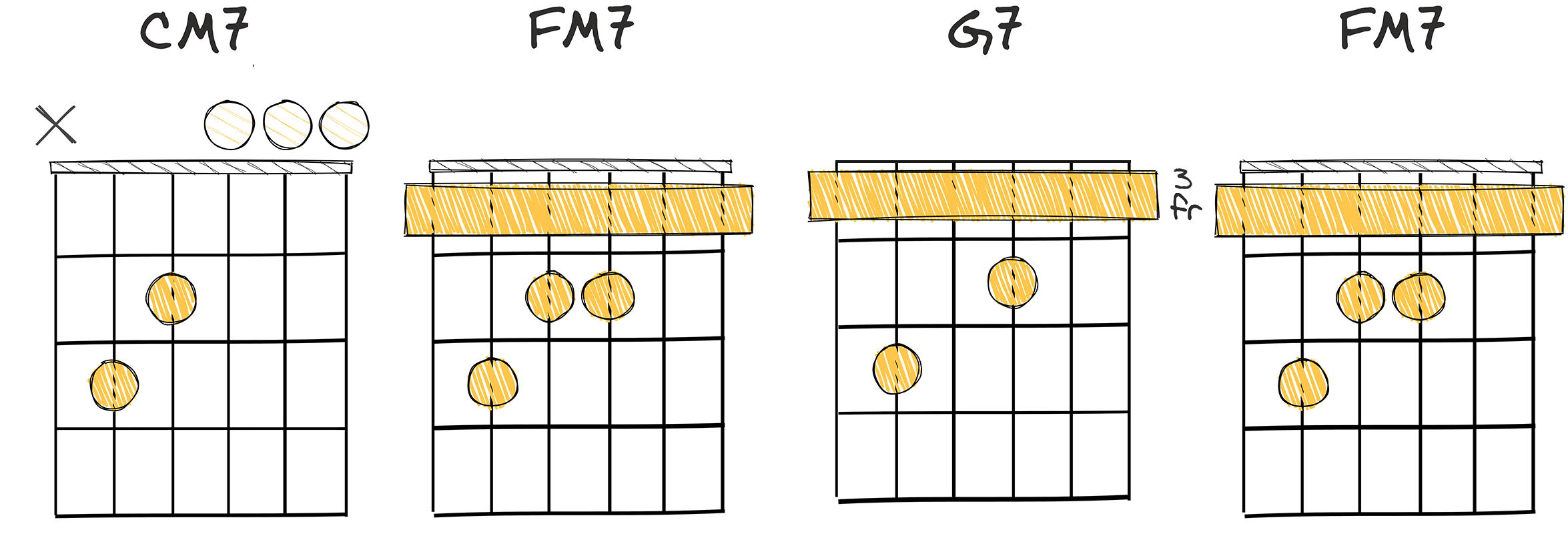
The I7-IV7-V7-IV7 (1-4-5-4) chord progression is not only one of the most famous sequences in music, but it is also a significant backbone in the realm of soul music.
This universally recognized and highly adaptable progression has a rich history that traces back to early classical music, traversing centuries and diverse musical genres to find its place in today’s soundscape.
The potency of the 1-4-5-4 progression, often referred to as the ‘doo-wop’ progression, lies in its simplicity and familiarity.
Simplicity is etched into the essence of this progression as it’s easy to play, allowing instrument players of any skill level to perform it, and offering an ideal starting point for aspiring songwriters and composers.
The 1-4-5-4 progression also follows the basic principles of tension and resolution in music theory adding to the ease of playing.
Interlaced with the notes are the emotive undertones that the progression carries, resonating with the listeners on a much deeper level.
The notes carry certain emotions, and when played in a sequence, they can also become a storytelling tool, thus becoming an integral part of soul music.
When it comes to articulating heartfelt emotions, soul music often taps into the captivating resonances offered by this progression.
While the chords CM7 – FM7 – G7 – FM7 (Key of C) form the basis of this progression, diversity lies in the different rhythmic patterns and embellishments musicians might add.
Progressions such as these speak to listeners on a universal level but leave enough space for individual interpretation, making them a powerful tool in constructing memorable and impactful music.
The doo-wop progression has found frequency in various music genres from blues to pop, jazz to rock, and notably soul music, lingering in the hearts and minds of many, even when the song has ended.
This is a testament to the timeless resonance of such sequences and the melody they weave when skilfully articulated by a musician – a subtly beautiful dance of tension and release.
The soulful renderings made possible by these chords create a sound filled with character and depth; a testament to the progression’s legacy.
The I7-IV7-V7-IV7 progression plays a significant role in adding a touch of elegance to your music, a soulful aura that touches the deepest chords of human emotion.
ii – V – I (2-5-1)
Uncover the heart of soul music with this elegant progression.
The ii-V-I progression is one of the most common and important chord sequences in jazz and popular music, renowned for its pleasing harmonic flow. This progression adds a soulful, elegant touch to your music, exuding a smooth transition between chords while providing a solid backbone for any song structure.
- Difficulty: Intermediate
- Example: Am – D – G (Key of G)
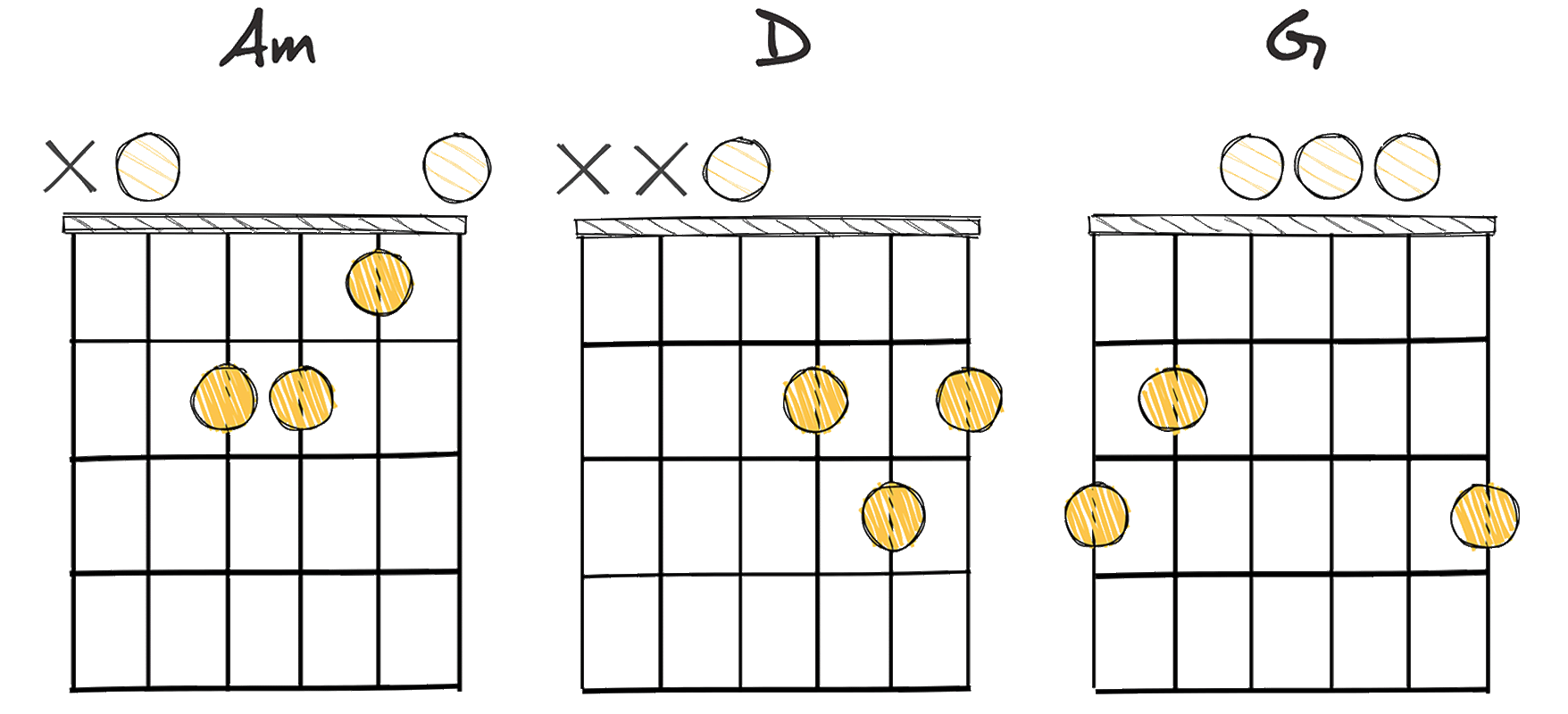
The ii – V – I (2-5-1) progression is widely used in pop, blues, and especially jazz music, serving as a foundation to many famous chord changes.
The elegance of this progression can efficiently transform the esthetic feel of a song, igniting the listener’s emotions with its imperfect cadences and non-resolving characteristics.
The 2-5-1 progression in the key of G, for instance, is characterized by Am (the ii chord) – D (the V chord) – G (the I chord).
The history of this chord progression can be traced back to the classical period, however, it became significantly more popular during the era of bebop jazz in the 20th century.
The ii – V – I progression is also prevalent in contemporary music genres, such as pop and rock, where it serves as a seamless transition between verses and choruses.
This is because the ii – V – I progression has a tendency to melodically lead to one another, creating smooth harmonic transitions that are satisfying to the human ear.
The overall richness and spontaneity complex of the 2-5-1 progression is what often makes it Intermediate to play.
Knowledge of music theory can be helpful in mastering this progression, as understanding the components and functionalities of each chord aids in the overall execution and variation of the progression.
Expanding your understanding of this progression and integrating it into your music can add wonderful layers of harmonic sophistication to your piece, enhancing its overall texture.
The ii – V – I progression is a critical part of music that any musician or songwriter keen on creating emotionally engaging, memorable melodies should familiarize themselves with.
Learning to use this progression effectively can be a launching pad for innovative songwriting and composition.
It’s interesting to think that three simple chords, combined right, could have so much power in shaping the sound and emotional tone of a track.
I7 – vi7 – ii7 – V7 (1-6-2-5)
A harmonious soulful journey, creating classic elegance in rhythm and blues.
The I7 – vi7 – ii7 – V7 progression is a classic sequence found in soul music, adding a distinctive richness to songs. With a sweeping switch between major and minor chords, it adds depth, variety, and a sense of anticipation to the tune, making the music sound more complex and dimensional.
- Difficulty: Intermediate
- Example: CM7 – Am7 – Dm7 – G7 (Key of C Major)
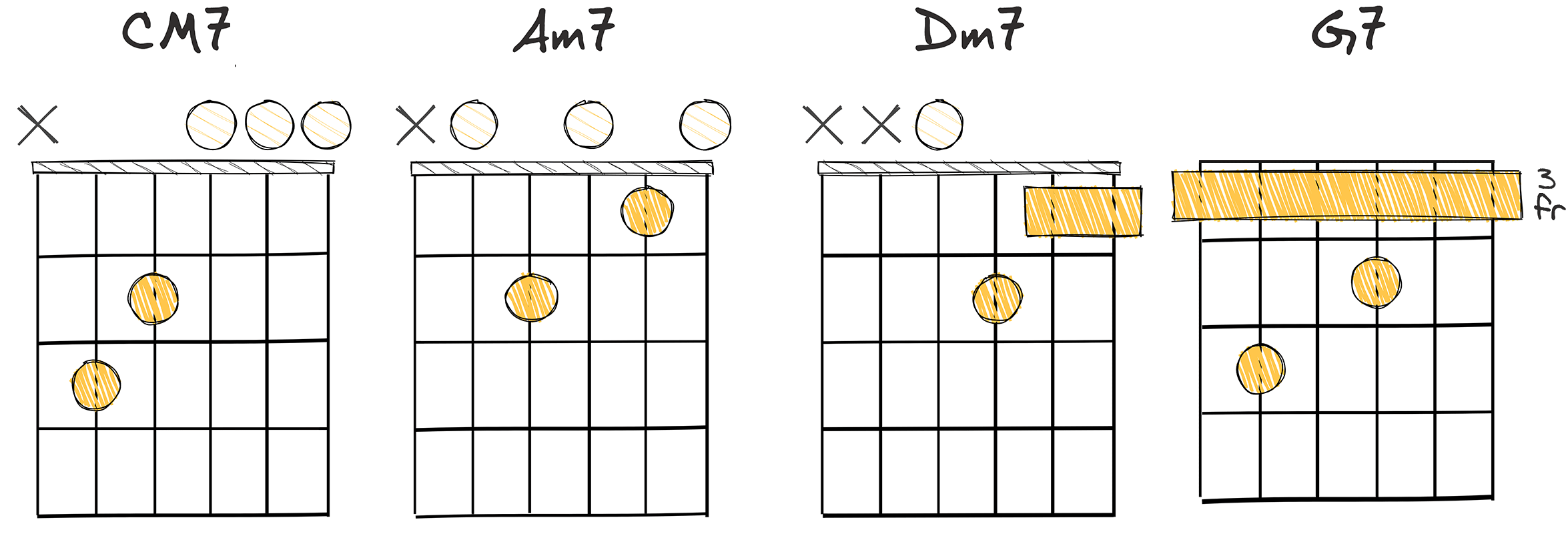
Today we are going to take an in-depth look at the I7 – vi7 – ii7 – V7 progression, or commonly known as 1-6-2-5 in the wonderful world of music theory.
The I7 – vi7 – ii7 – V7 chord progression, within the key of C Major, is composed of the chords CM7 – Am7 – Dm7 – G7, which are incredibly popular chords used in countless songs across varied genres.
One of the key features of this unique progression is the elegant and expressive nature that it generates, allowing musicians to create beautiful harmonies and melodious tunes.
I7 – vi7 – ii7 – V7 is an intermediate level chord progression, which means musicians who are relatively new with some experience can comfortably play, while still stretching their skills.
When it comes to soul music, this chord progression truly stands out as a cornerstone.
With its oh-so-smooth harmony transitions and emotionally saturated chord alterations, this progression can enhance the richness and depth of any soulful melody.
Furthermore, the harmonic connection of these chords helps in enhancing the emotional connection of the song, providing a sense of fluidity to a progression that can convey a wide spectrum of feelings.
Building on this powerful chord progression can help musicians deliver truly elegant and heart-touching performances.
This progression, being mostly played within the key of C Major, includes both major and minor chords, which gives it a brilliant blend of contrasts.
The major chords add a bright and joyful flavor, while the minor chords introduce a tad bit of melancholy and sadness, leading to a superb musical journey for the listeners.
Interesting to note, even though it was originated around the early jazz era, musicians started using this progression in many other genres like pop, rock, and R&B due to its versatility and appealing nature.
This elegant chord progression is not only limited to guitar or piano but also fits seamlessly on other instruments, making it a true favorite among musicians.
Incorporating it into your compositions will not only add depth and soulfulness but can also elevate the overall sound of your piece, thereby creating a mesmerizing musical experience.
All in all, the I7 – vi7 – ii7 – V7 chord progression has historically added elegance and a unique soulfulness to any musical composition it’s featured in, thereby becoming an essential tool in the belt of any musician.
I7 – vi7 – IV7 – V7 (1-6-4-5)
A harmonic journey providing rich, soulful elegance to your compositions.
The I7 – vi7 – IV7 – V7 chord progression is a vibrant and widely embraced sequence in pop and rock music, marked by its seamless flow between chords and offering an emotionally resonant and melodically captivating sound. This progression has found its way into countless hit songs, owing to its ability to stir profound feelings, infusing a timeless and sentimental charm into any composition.
- Difficulty: Intermediate
- Example: CM7 – Am7 – FM7 – G7 (Key of C)
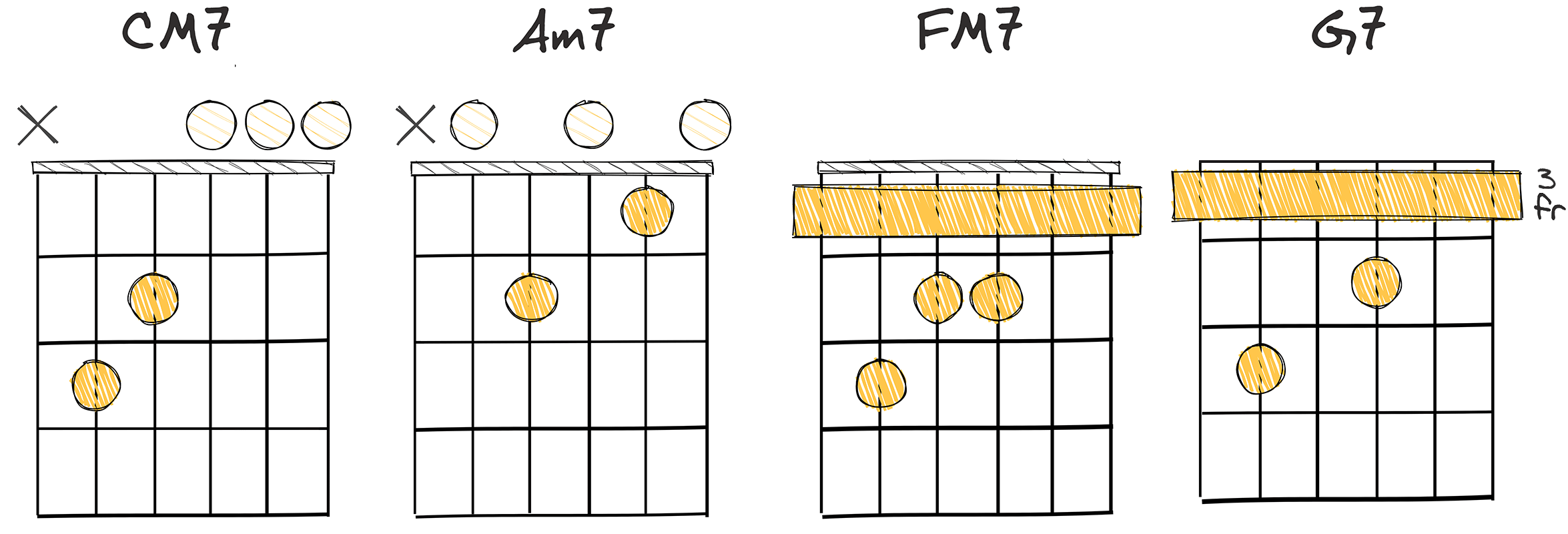
The weaving of certain chord progressions can imbue a song with a rich, soulful essence, taking the listener on a captivating musical journey.
One specific progression, I7 – vi7 – IV7 – V7 (1-6-4-5), shines with a universal charm and an unparalleled ability to convey intense emotion and a sense of nostalgia when skillfully applied.
This progression has a venerable history, being a staple in the genres of pop and rock music, and has become an iconic musical phrase for many artists.
The I7 – vi7 – IV7 – V7 progression offers a journey filled with intrigue and longing, making it exceptionally appealing.
It’s crucial to recognize that this sense of longing and desire originates from the musical path that this progression sets in motion.
The movement from the I7 to the vi7 chord introduces a poignant touch, taking us away from the “home” feeling, creating a sense of yearning.
However, the subsequent transition to the IV7 chord adds a new twist, a glimmer of hope, suggesting that the emotional voyage is far from over.
It’s a nuanced element, yet one that resonates deeply.
Next, the shift to the V7 chord injects a pulse of excitement and expectancy.
This anticipatory character sets the stage for the eventual return to the I7 chord, providing a satisfying resolution.
It’s an intricate ballet, with the chords taking turns leading and following, all under the intuitive guidance of the musician or composer.
Mastering the I7 – vi7 – IV7 – V7 chord progression demands a certain degree of musical finesse.
Given its nuanced role in the song’s structure, an intermediate level of expertise and flair is essential to wield it effectively.
But it’s this very complexity that entices many musicians to explore this progression.
As with many things in life, the higher the obstacle, the more fulfilling the accomplishment and growth that follows.
The widespread appeal of this progression has seen it embraced across various musical styles.
But its roots in creating heartfelt and timeless pieces are unmistakable.
Without a doubt, the I7 – vi7 – IV7 – V7 chord progression is an invaluable asset for any musician looking to infuse their music with a touch of graceful passion.
I7 – III7 – IV7 – ii7 (1-3-4-2)
This progression blends Soul’s melodious charm with understated sophistication.
This chord progression, which moves from I7 to III7 to IV7 and then ii7, creates a soulful and enchanting vibe that brings forth a unique musical dexterity. It is a progression that provides a somewhat elegant unpredictability, offering musicians a perfect base to construct soulful melodies and weave emotional narratives.
- Difficulty: Intermediate
- Example: CM7 – E7 – FM7 – Dm7 (Key of C)
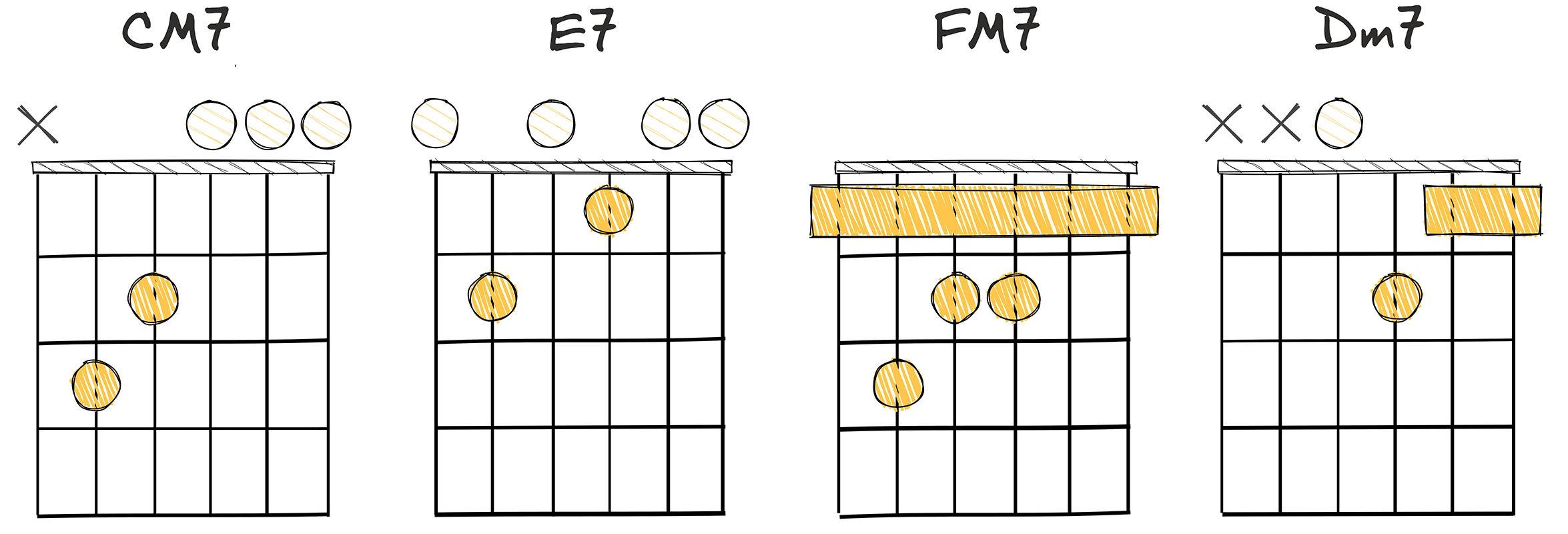
The I7 – III7 – IV7 – ii7 (1-3-4-2) chord progression is deeply rooted in the rich tapestry of music history.
Known for its unique tonal qualities, it brings a captivating depth and an injection of soul into any composition.
Historically, the 1-3-4-2 progression is linked to a myriad of music genres from classical to rock, jazz to blues, and everything in between.
Its adaptable and intriguing sonic arrangement has contributed to its enduring popularity amongst musicians.
With its root in the key of C major, this progression typically employs the chords CM7 – E7 – FM7 – Dm7.
This particular order of chords creates a soulful, enchanting tonal blend that guides the listener through a journey of musical exploration.
At an intermediate level of playing, it remains a progression that demands sensitivity and control, the art of letting each chord breathe and interact fluidly with the others.
Musicians with an intermediate level of skill find this progression particularly enriching, as it requires a fine balance of tonal subtlety and harmonic understanding.
Learning how to intricately weave these chords together represents a critical step in any musician’s journey.
The progression’s unique harmonic structure creates a soulful resonance that remains timeless.
Its depth and richness command a level of sophistication that takes the music to another level.
The chords lay the groundwork for the emotionally-charged soaring vocals, accentuating the growing intensity of the melody.
The final transition to the ii7 chord (D Minor 7) closes the progression loop, injecting a touch of melancholy into the mix.
It is a fitting end to the emotional journey the chord progression takes us on.
This progression’s soulful elegance is rooted in its ability to elicit a depth of emotion through engaging chord shifts.
It subtly transports the listener on a musical journey, providing an engaging narrative framework for any song.
The I7 – III7 – IV7 – ii7 progression presents an exciting exploration of the harmonic possibilities contained within any key.
Its intermediate level of complexity challenges the musician without appearing overtly complex, making it an excellent tool for bringing a touch of sophistication to your compositions.
ii7 – V7 – I7 – vi7 (2-5-1-6)
This progression infuses soulful sophistication into versatile music compositions.
The ii7 – V7 – I7 – vi7 chord progression is a staple in soul music, utilized for its ability to evoke deep emotions with its smooth and elegant transition between chords. This progression’s charm lies in its circular motion, which provides a seamless flow and allows for a more intricate and compelling harmonic structure.
- Difficulty: Intermediate
- Example: Dm7 – G7 – CM7 – Am7 (Key of C)
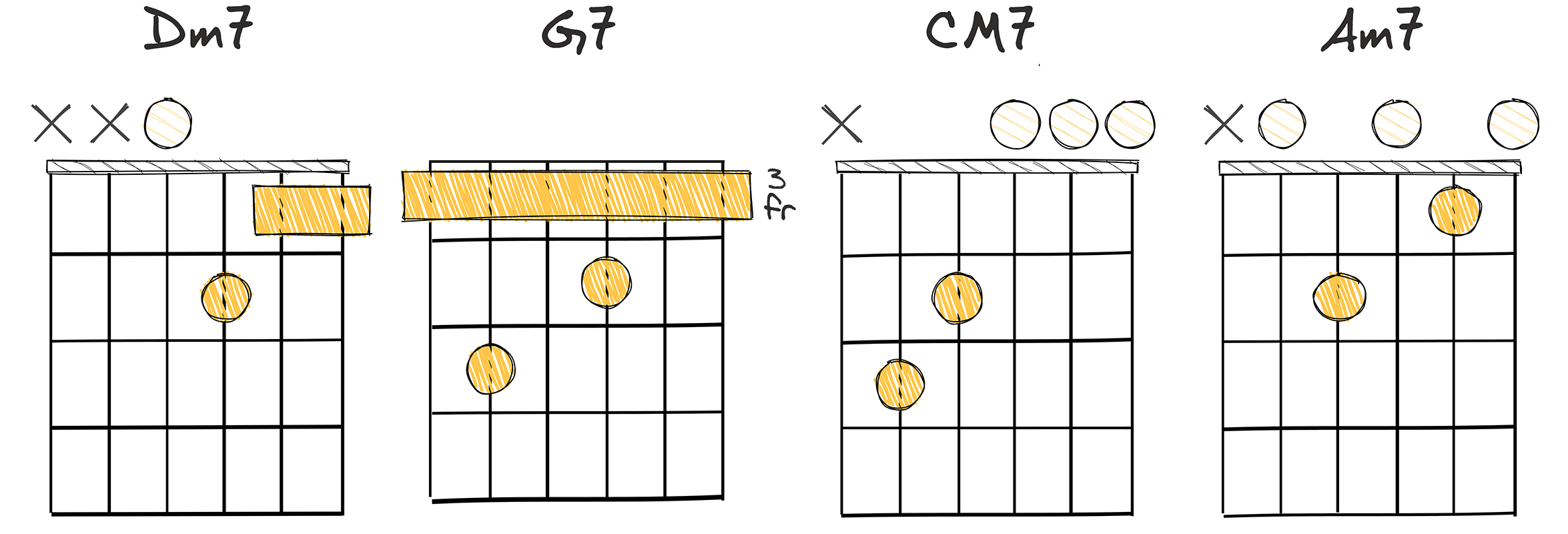
The ii7 – V7 – I7 – vi7 progression plays a significant role in the broad spectrum of animated musical eloquence, particularly in jazz and soul music genres.
Often referred to as 2-5-1-6 in the numeral system, this chord progression has a deeply-rooted history and displays an intricate fusion of melodic movement and harmonic progression, making it an intermediate level progression to play.
At the heart of this progression rests the dynamic principle of tension and release, with the ii7 and V7 chords establishing tension, the I chord offering resolution, and the VI casting an unexpected, emotive color.
History reveals that this chord progression, while seemingly simple, carries a tradition of being used in some of the greatest soul and jazz compositions to date.
This impactful progression can be traced back to the era of classical music, finding its presence in the masterworks of great composers such as Bach and Mozart.
Throughout its evolution, the 2-5-1-6 progression has maintained a pronounced significance: its potential to invoke deep emotions, and shape memorable melodic lines.
Implementing the ii7 – V7 – I7 – vi7 progression in a musical composition necessitates a thorough understanding of each chord’s functionality and the skill to manipulate its expressive possibilities.
The ii7 chord (Dm7 in the key of C) is a subdominant, the V7 chord (G7) acts as dominant, the I7 chord (CM7) imparts resolution as tonic, and the vi7 chord (Am7) contributes an emotional tint by invoking a relative minor.
This progression’s distinctive feature lies in its striking movement from a minor ii7 chord to a major V7 chord, followed by a soothing major I7 chord, and finally the unexpected minor vi7 chord, thus creating an incredible melodic tension and release effect.
This progression, when performed skilfully, can weave a compelling musical narrative that transcends the conventional boundaries of harmony and melody.
To fully harness the expressive potential of the ii – V – I – vi progression, knowledge of music theory, technical proficiency, and creative experimentation with timing, voicing, and instrumentation are imperative.
Ultimately, the craft of arranging these chords meaningfully lies in understanding their nuances, adapting their inherent tensions, and resolving them effectively to convey the intended musical sentiment.
I – IV – vi – IV (1-4-6-4)
A melodic journey oozing with soulful elegance and resonant depth.
The I-IV-vi-IV chord progression is a commonly used sequence in soul music, renowned for evoking deep emotions and an ethereal musical atmosphere. It captures the core essence of soul music, adding a touch of elegance and sophistication to your compositions by using the tonic, subdominant and submediant chords.
- Difficulty: Easy
- Example: C – F – Am – F (Key of C)
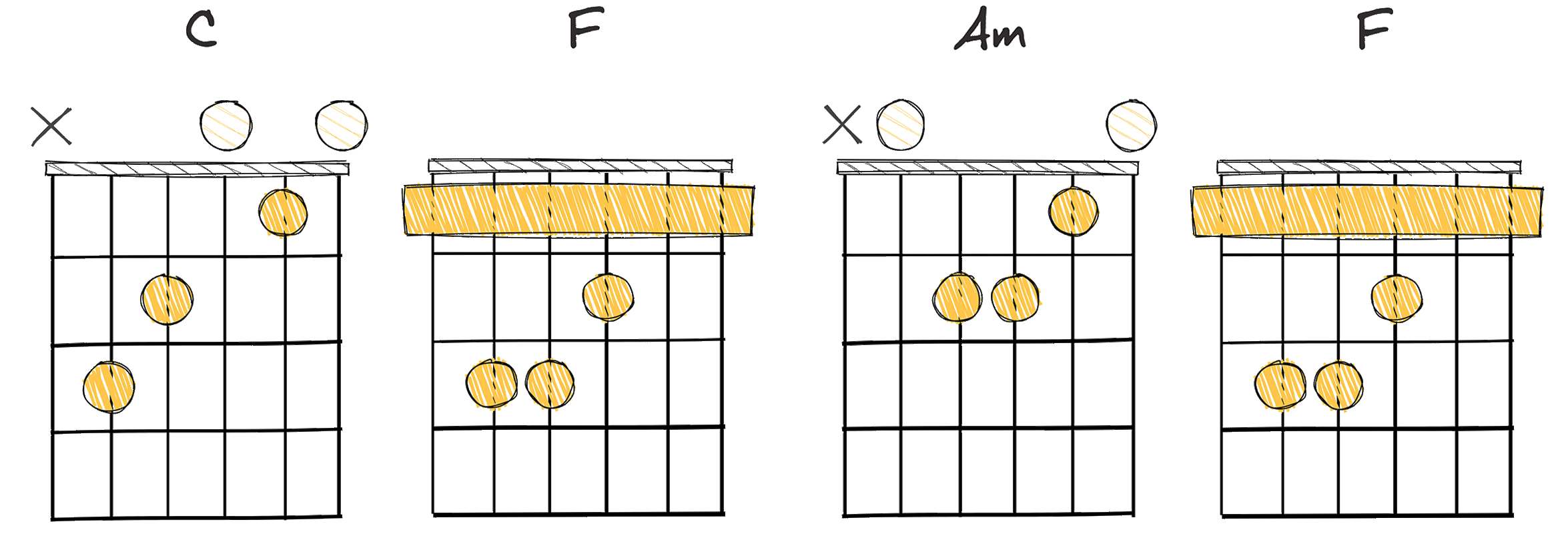
Chord progression is a pivotal element of any song, acting as the foundation for the melody and the overall tonal ‘story’ of the track.
One such progression that can be found in numerous genres of music across the decades is the I – IV – vi – IV (1-4-6-4) progression, also known as the ’50s progression’ or ‘the four chords of pop’.
These four chords create a pleasing tonal balance and are exceptionally easy to play which makes them highly popular amongst songwriters of all skill levels.
Historically, this progression has its roots in gospel and soul music.
However, it has gradually found its way into an array of other genres including pop, rock, and blues, thanks to its simplicity and straightforward structure.
By using just these four chords, it’s easy to create an engaging melody that serves as the backbone of the track.
The high degree of flexibility offered by this style is one of the reasons that has contributed to its widespread use and popularity.
The true magic of the I – IV – vi – IV progression lies in its ability to be moulded and adapted in a myriad of ways to match the mood of the track.
It’s indeed a matter of skilled application that makes this chord progression sound anything but mundane or clichéd, despite its widespread usage.
As already established, it’s quite simple to play.
This makes it a great progression for novice players who are still getting their fingers accustomed to the guitar or piano, offering a low barrier to entry while still allowing for a multitude of tonal possibilities.
The I – IV – vi – IV progression, despite its simplicity, continues to be a powerful tool in the songwriter’s arsenal, providing an easy yet potent method to express emotion through music.
The undeniable charm of this progression lies in the fact that it can be as simple or as sophisticated as one wants it to be, lending itself perfectly to a wide array of musical styles and genres, from soul to pop to rock and more.
Moving forward, experimenting with this progression by changing rhythms, incorporating different instruments, or altering the tones, can unlock new layers of elegance and depth in your music, proving that simplicity is indeed the ultimate sophistication.
V – IV – I (5-4-1)
This V-IV-I progression brings a soulful resolve to your composition.
The V-IV-I chord progression, often found in soul music, brings an emotional depth and elegant resolution to a piece. It transitions from a dominant chord to a subdominant, before comfortably resolving to the home or ‘tonic’ chord, adding a soulful intensity to your compositions.
- Difficulty: Easy
- Example: G – F – C (Key of C)
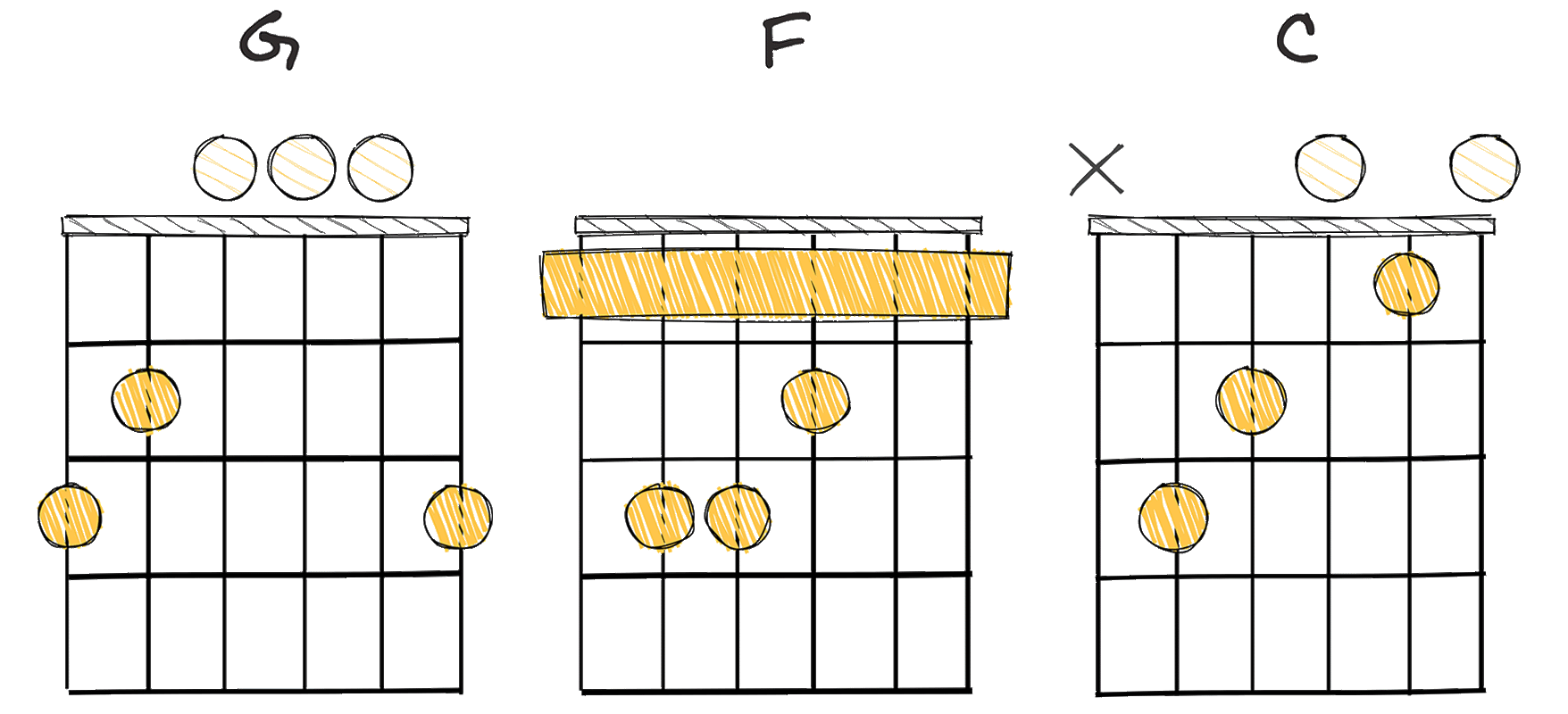
The V – IV – I (5-4-1) chord progression holds substantial historical significance in the realm of soul music.
If we are to dive into the history of this chord progression, we will learn that it comes with deep roots.
In the context of music theory, the V – IV – I progression is often associated with the genre of blues, where it is sometimes known as the ‘turnaround’.
While the V – IV – I progression plays an extensive role in music across various genres, its significance to soul music is particularly noteworthy.
Its use in soul music largely contributes to the genre’s intrinsically emotional and passionate sound.
This is because the V – IV – I progression is designed to create an upbeat and enthusiastic vibe, which is so characteristic to the soul genre.
Another factor that adds to the attractiveness of this progression is its simplicity.
This chord progression is easy to play, adding an approachable element for those new to creating soul music.
The V – IV – I progression remains a fundamental framework that many soul music artists base their compositions upon even today.
Understanding the history and characteristics of this chord progression can benefit musicians who seek to emanate the same passionate vibes in their soul songs.
Using this as a basis, even novice players can begin to infuse a soulful sound into their compositions.
Thus, the V – IV – I progression not only holds historical significance but continues to be a relevant tool for modern soul music composition.
The allure of this progression enables artists to create music that speaks to the heart, which is the ultimate essence of soul music.
I – IV – I – V (1-4-1-5)
This progression exudes soulful elegance, enriching your music’s emotional depth.
This is a classic, soulful chord progression that moves from the tonic I to the subdominant iv, back to the tonic I, and then to the dominant V. The progression provides a sense of balance and elegance in a musical composition, embodying a timeless soul characteristics by transferring listeners to a deep and emotional landscape.
- Difficulty: Easy
- Example: G – C – G – D (Key of G)
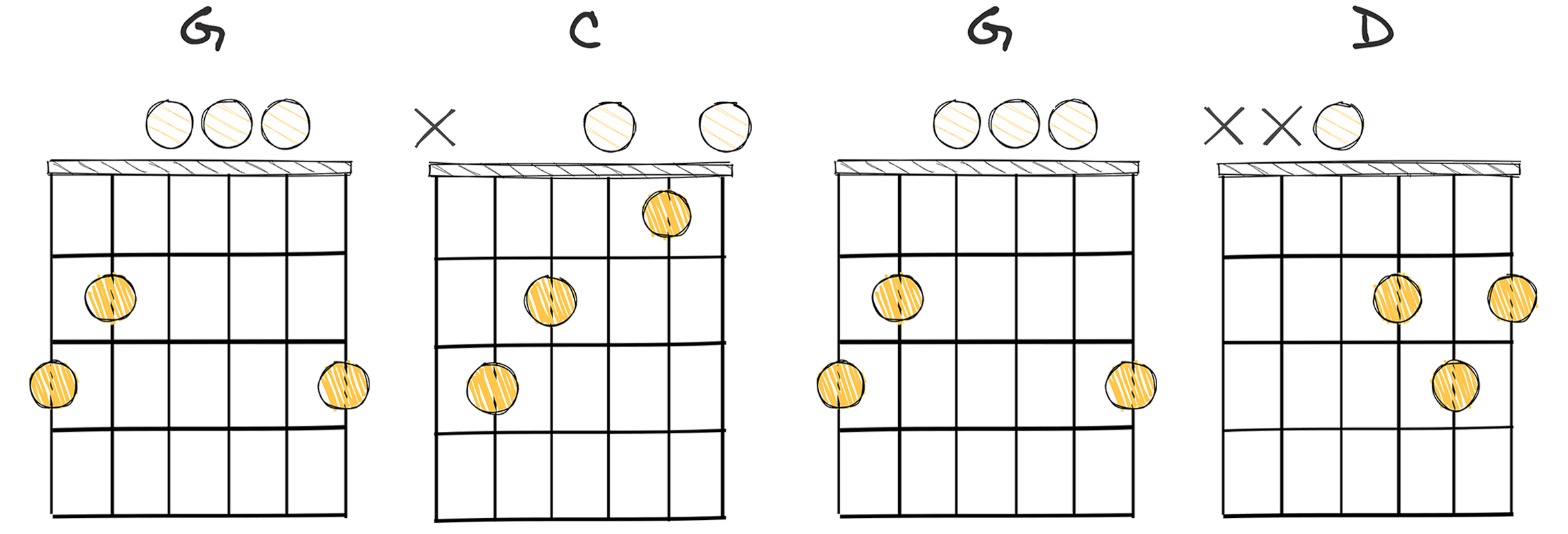
Incorporating the chord progression of I – IV – I – V (1-4-1-5) can significantly elevate the elegance and soulfulness of your music compositions.
Originating from the heart of blues and jazz, this chord progression, consisting of the first, fourth, first and fifth chords, has been utilized extensively in various music genres such as pop, rock, and even electronic music.
The beauty of this chord progression lies in its simplicity, making it incredibly easy to play even for musicians in the early stages of learning.
The progression starts on the I (first) chord, which is the root of the key, hence creating a strong foundation.
Then it moves to the IV (fourth) chord, and this is where the magic happens
This shift from the major to minor chord is often described as bringing a touch of ‘bittersweet’ or ‘melancholy’ feeling to the music, adding depth and complexity to the overall sonic experience.
The I – IV progression creates a compelling harmonic tension that is beautifully resolved when returning to the I chord.
The sequence is then completed by moving to the V (fifth) chord, which further enhances the harmonic progression, adding an extra layer of richness to the soundscape.
Striking a balance between the predictable and unpredictable, the I – IV – I – V progression neither sounds too familiar nor too complex; its beauty lies in hitting the sweet spot in between.
Understanding and implementing the I – IV – I – V progression is a great way to enhance the musical vocabulary of any aspiring musician.
It enriches the quality of your compositions and offers a bridge to connect deeply with your listeners, making your music more appealing and relatable.
So, while the chord progression’s structure seems simple, the emotional range it provides to your music is unparalleled.
IV – V – iii – vi (4-5-3-6)
This progression exudes a refined sense of soulful elegance.
This progression, IV – V – iii – vi, offers a unique flavor commonly found in soul music, with its journey from the subdominant to dominant, then finally concluding on the relative minor. It contributes to a harmonically rich and soothing sound, creating a mood that perfectly encapsulates the emotional depths in a soulful performance.
- Difficulty: Intermediate
- Example: F – G – Em – Am (Key of C)
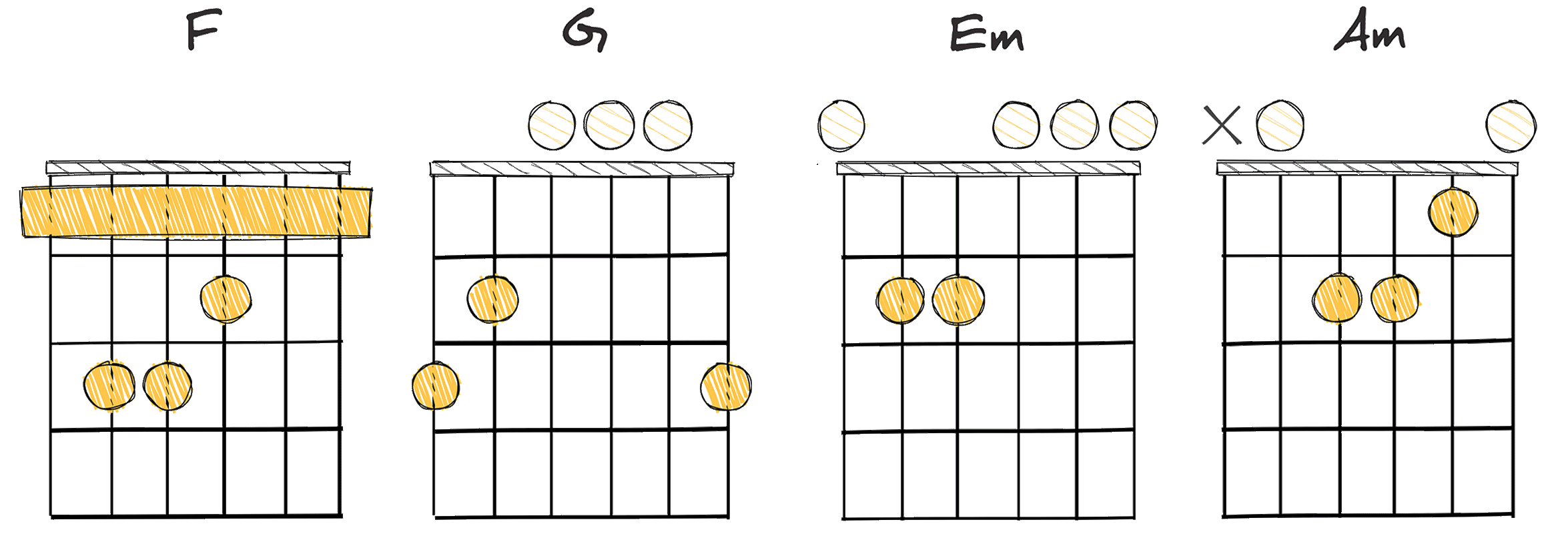
The IV – V – iii – vi chord progression is an understated yet remarkable part of soul music, serving as the framework for numerous memorable songs.
This progression, with its roots anchored in Romantic Period classical music, is defined by a richly emotive quality that perfectly suits the raw and expressive essence of soul.
The progression starts on the IV chord, pushes upwards to the V, descends somewhat melancholically to the iii, and finally settles on the vi.
These movements create a certain tension and release that speak to our deepest emotions, embodying the struggle and triumph characteristic of soul music.
The progression’s IV to V movement establishes an ascending pattern that builds anticipation, while the subsequent drop to the iii and the resolution on the vi serve to fulfill that anticipation in a profoundly moving way.
This natural ebb and flow, this build-up and resolution, is a fitting analogy for the journey of the human soul, a journey frequently explored in soul music.
Simultaneously, this chord progression provides a compelling narrative for the music, making the sounds and harmonies tell a story in a way that no lyrics can.
It’s a progression that is not overly complicated, classified as intermediate level, but one that requires a nuanced understanding of how chords interact.
Its potency lies not in its complexity, but in its ability to convey deep emotion through musical simplicity.
Consider the soulful classic, “Sitting on the Dock of the Bay” by Otis Redding.
Here, the IV – V – iii – vi progression is used masterfully, fully encapsulating the song’s poignant, contemplative mood.
This iconic song embodies the emotional narrative these chords provide, the gentle build-up from the IV to the V and the subsequent drop to the iii and vi chords perfectly mirroring the narrative arc of the song.
In the key of C, F – G – Em – Am match the progression.
These chords hold the progression’s inherent potency and can be manipulated in creative ways.
The power lies in the emotion they can convey when strung together in a sequence, playing off of one another and evoking a deep emotional response.
Soul music will forever be linked with this chord progression.
It is an integral part of the genre’s musical vocabulary.
As such, whether you are a seasoned songwriter or a beginner, understanding and mastering this progression can add a new level of depth and elegance to your music.
The Bottom Line
After studying these common chord progressions in various combinations, it’s evident that they significantly impact the structure and overall sonic appeal of a song.
They shape the emotional resonance and melodic flow.
Their usage constitutes an essential component of songwriting and music production, providing a versatile framework upon which artists can express their creativity.
The breadth of these progressions offers vast potential for musical experimentation and unique song creation.
Musicians and composers can essentially use them as a tool to manipulate moods, create tension, and resolve in their compositions.
Regardless of the genre and style of music, the power of these quintessential chord sequences remains undeniable, underscoring the dynamism and universality of music.
In love with guitars, and gear; expert in all things music! Been writing about guitars for about 5 years and counting. Born in the ’90s. Alma Mater: University of Havana. Always curious, trying to understand the world. #TeamFender




